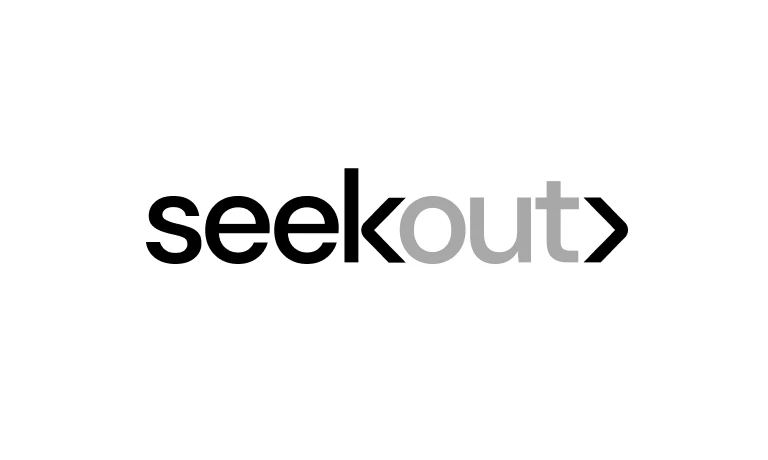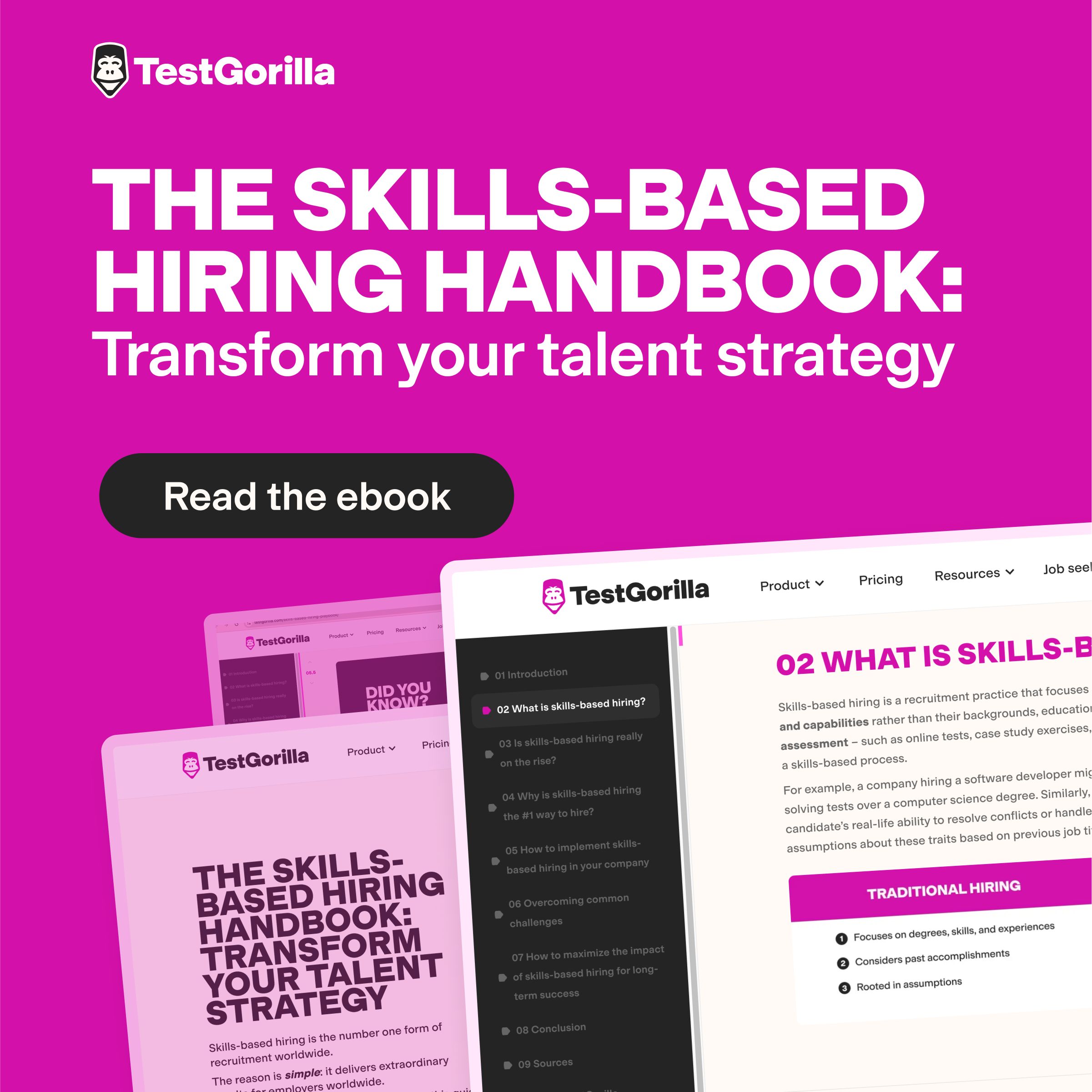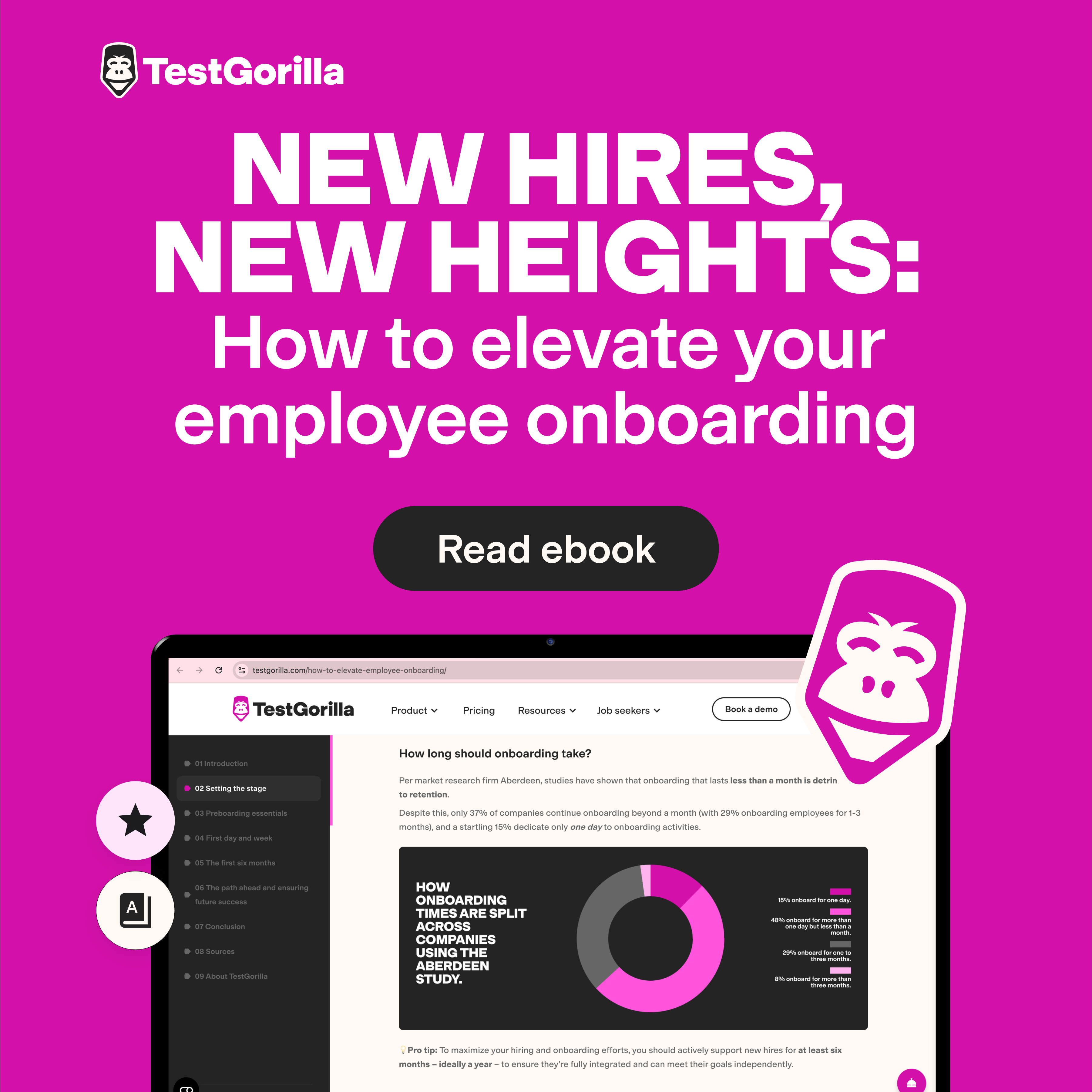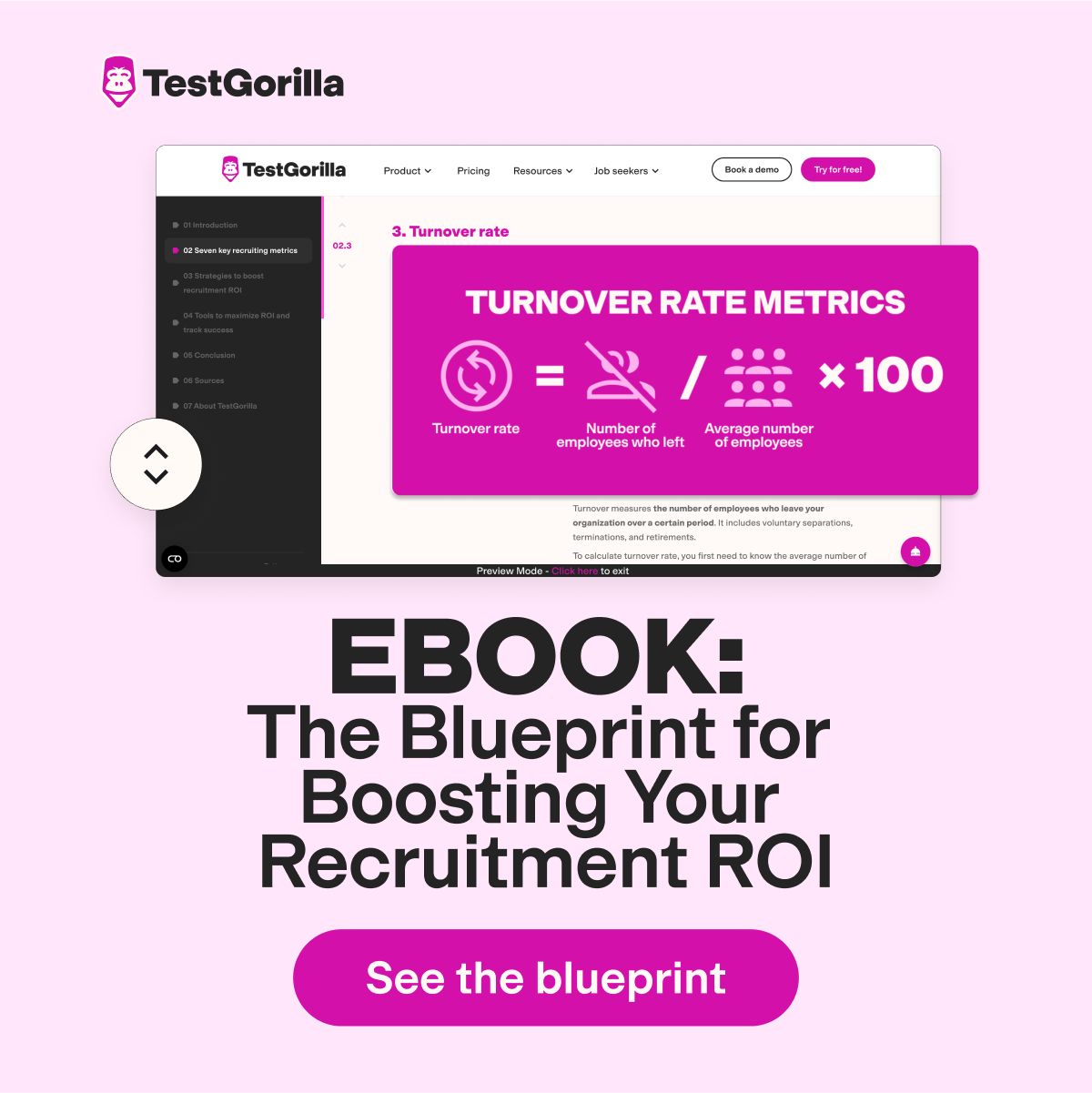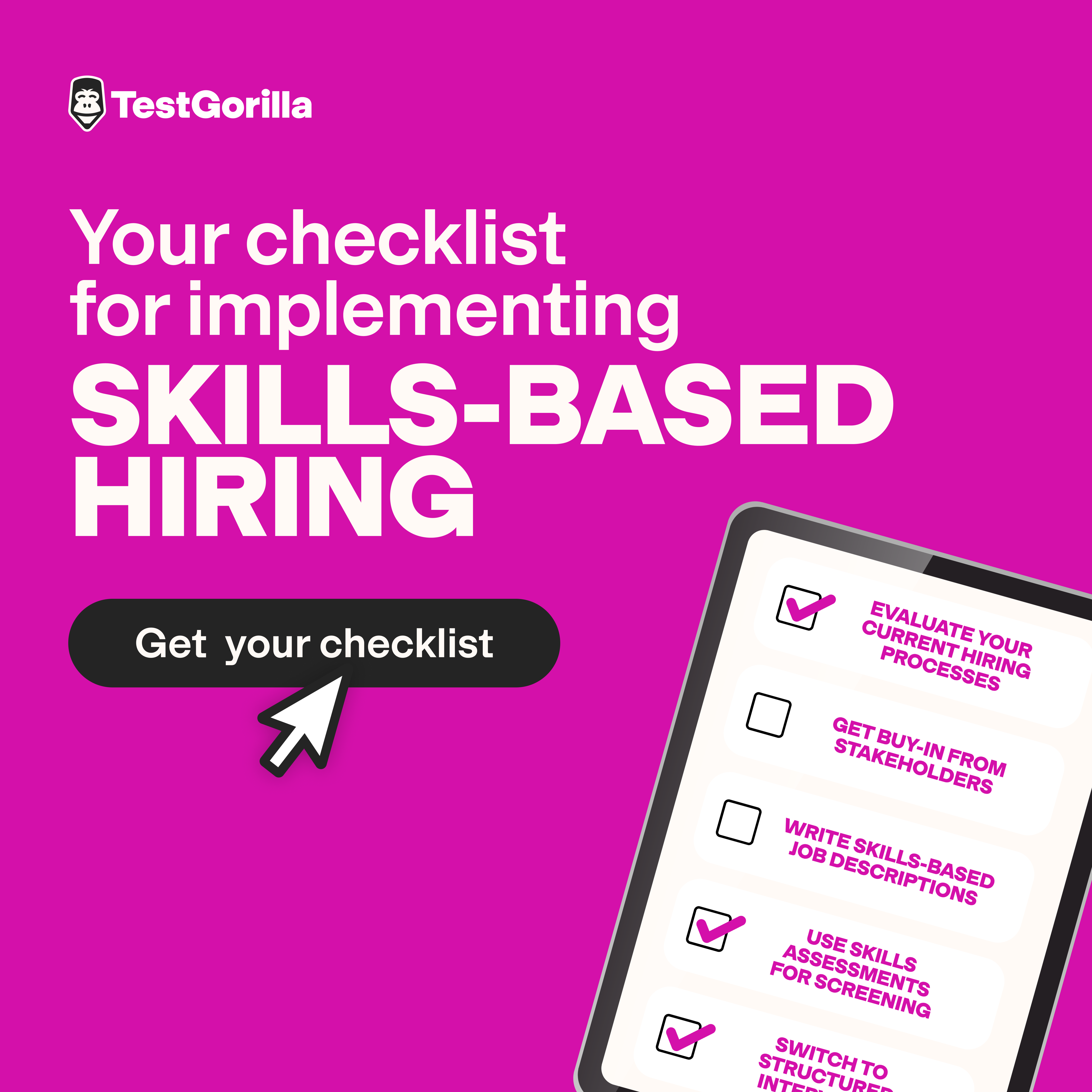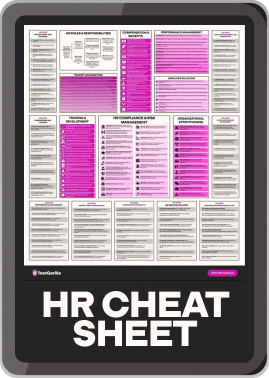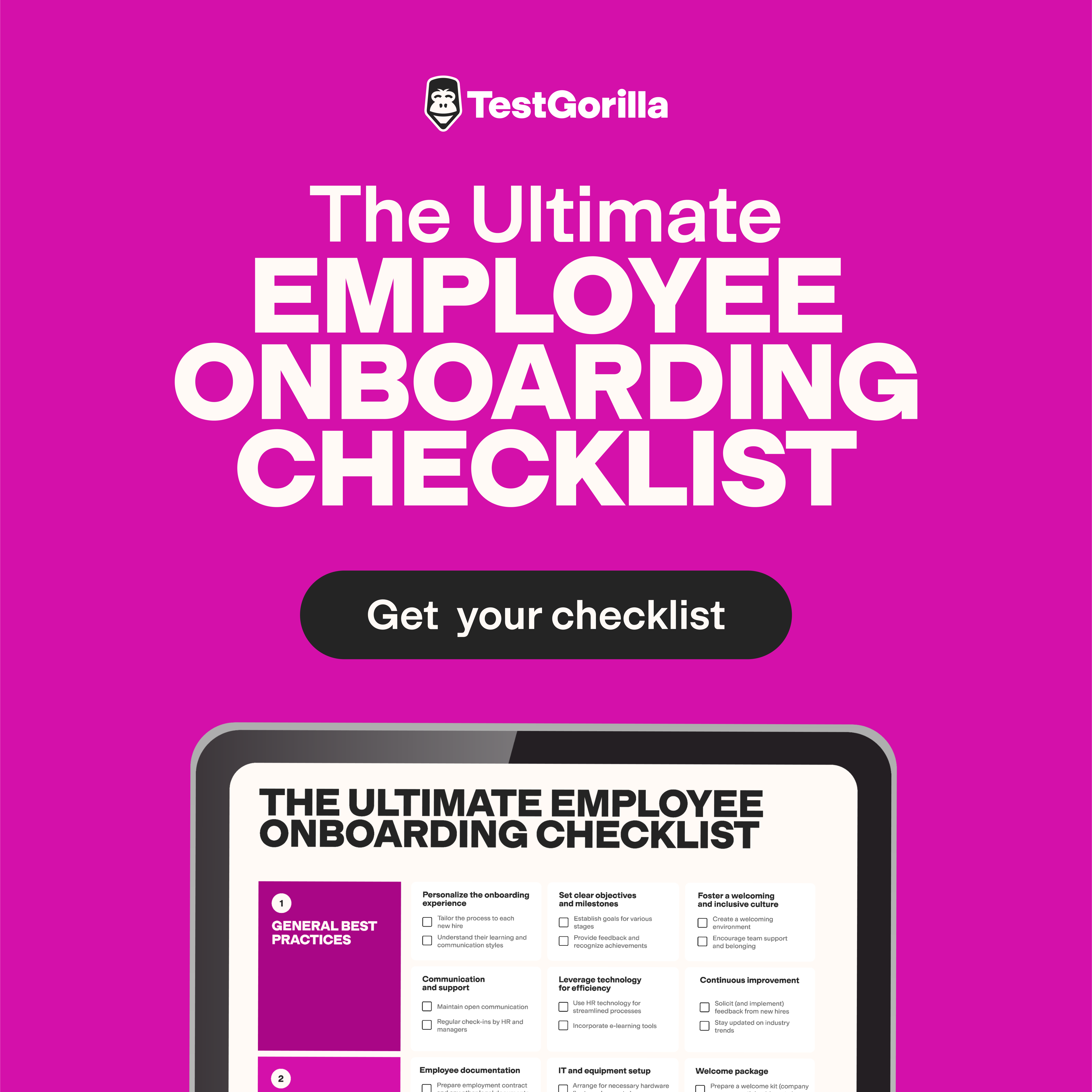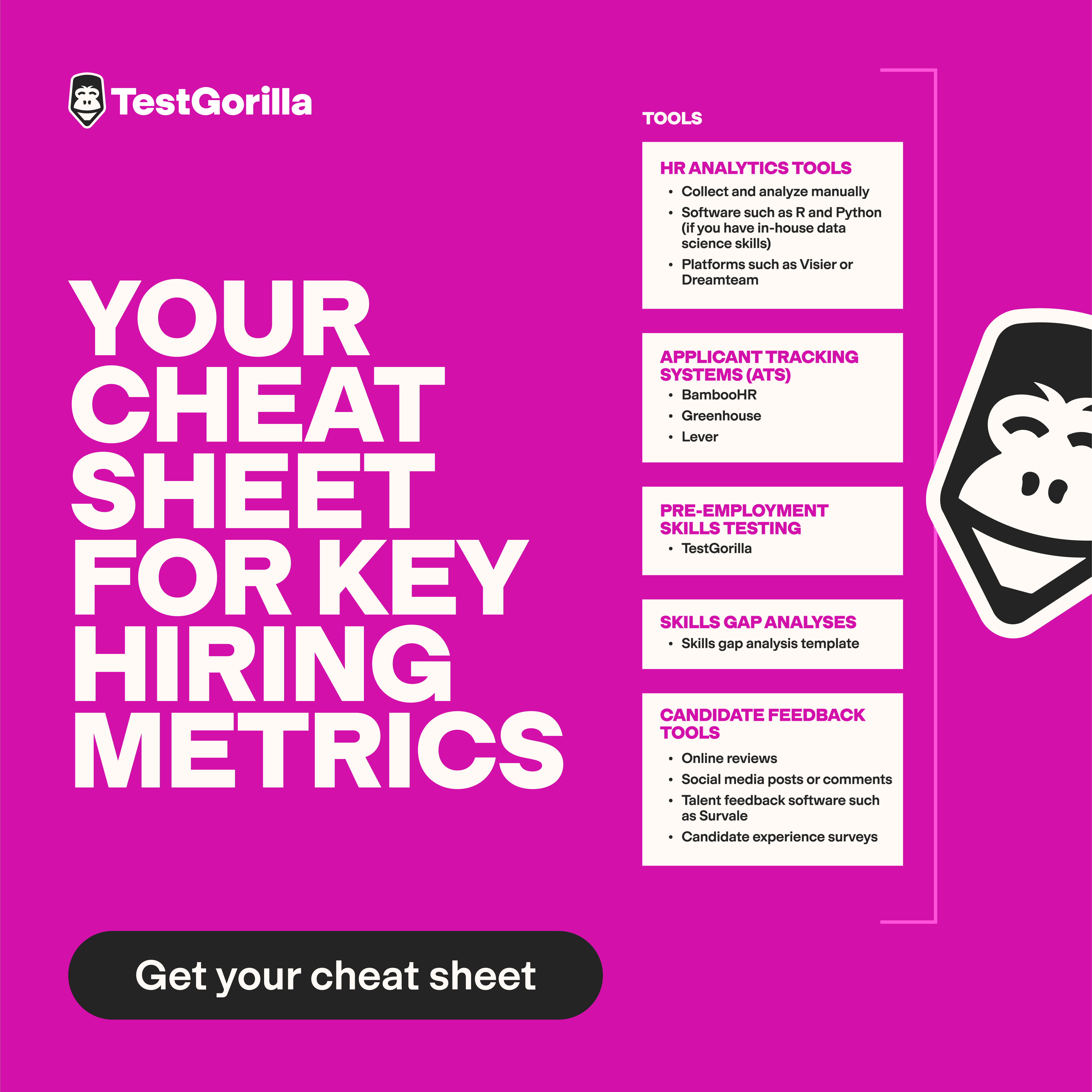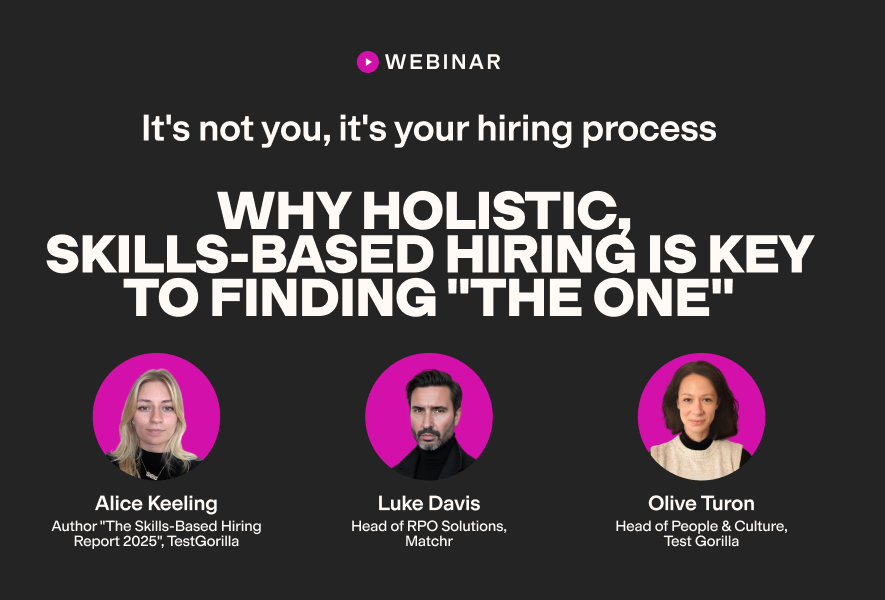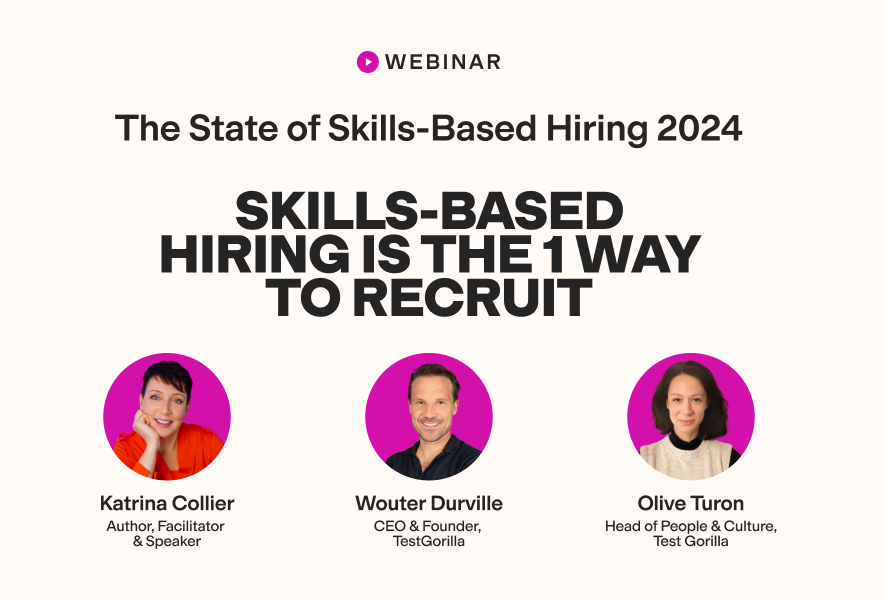Extraverts are the life and soul of the office. Friendly and enthusiastic, they’re great at pulling a team together and making everyone feel welcome.
But, how can you tell the difference between someone who’s genuinely extraverted and just really confident? Equally, is it possible to test for this personality trait without relying on gut instinct? The answer is yes, and it starts with using the right tools and interview techniques.
Read on to learn everything you need to know about extraversion, including how to spot it at interview and how tests like The Big 5 (OCEAN) test can help you assess it.
What is extraversion?
Extraversion (or extroversion) is a human personality trait associated with being friendly, outgoing, gregarious, and energetic. Extraverts usually enjoy working with others, forming social connections, and having their voice heard. They are verbally expressive, optimistic, and tend to excel in social settings where their ability to collaborate quickly sets them apart.
But that doesn't necessarily mean they’re always loud or the centre of attention. Instead, extraversion can show up as a cheerful disposition, an enthusiasm for life, or sometimes assertiveness, making it a pretty broad and flexible trait. That’s what’s so interesting about personalities: they’re right at the intersection of psychology and sociology, where science meets everyday life.
In psychology, extraversion is one of the Big Five personality traits coined by Carl Jung’s theory of personality. Alongside agreeableness, conscientiousness, neuroticism, and openness to experience, this five-factor model helps paint a fuller picture of how we interact with others. People are usually considered on a scale of extraversion to introversion, where extraverts gain energy from social activity, while introverts need time to recharge.
This measure of social energy can be helpful in understanding how different people thrive in various environments. For example, an extravert might feel most engaged and motivated in a lively team setting, while an introvert might do their best thinking in a quiet space with fewer interruptions. Neither is better or worse – they're just different ways of navigating the world.
Did you know: Very few people are purely introverted or extraverted, with many people falling somewhere in the middle of a sliding scale. These “ambiverts” often adapt well to different environments and can flex between both styles depending on the situation.
Examples of extraversion in the workplace
It’s also worth noting that confidence is irrelevant to whether someone is an extrovert or an introvert, making it difficult to tell which is which.
A confident introvert might have no problem standing up in front of a crowd and making their voice heard, while a shy extravert (who loves being around people) might struggle being the center of attention. As expertly put by Adam Grant, “If you stereotype extraverts as charismatic and introverts as aloof, think again.”
Here are some subtle (and not-so-subtle) ways extraversion and introversion might show up at work:
Extraversion
An extrovert might:
Volunteer to support new staff. Extraverts tend to enjoy meeting new people and naturally step into social or mentoring roles.
Prefer collaborative tasks to individual projects. Extraverts tend to prefer working as part of a team because it gives them a chance to bounce ideas and stay energized.
Enjoy a fast-paced environment. Extraverts are often at their best when there’s lots of hustle and bustle in the office.
Introversion
An introvert might:
Prefer to work from home. Being in their own space can be comforting to an introvert.
Need to take a walk every break time. While this is a healthy practice for anyone, introverts often use solo walks or quiet breaks away from external stimulation to recharge their mental energy.
Prefer deep, meaningful conversations over small talk. They tend to prefer connecting one-on-one or in smaller groups, where there’s space to really get into the details and listen fully.
Why extraversion can be beneficial at work
Although the US population is slightly more introverted than extraverted, many workplaces are built in a way that naturally favours and encourages extraverted personality types. For example, open-plan offices, collaborative projects, and brainstorming sessions.
These office features encourage visibility, open communication, and spontaneous interaction, aligning well with how extraverts operate. For someone who enjoys being around others and feels energized by group settings, these environments can feel exciting, engaging, and full of opportunity. Extraverts may find it easier to build networks, share ideas on the fly, and speak up without much hesitation.
This is great for any situation where stakeholder engagement, persuasion, or public speaking are key. These chatty, gregarious extraverts can often bring energy and momentum to a team, helping to build relationships quickly and keep projects moving forward. They’re usually comfortable jumping into conversations, presenting ideas to a room full of people, or navigating networking events with ease – perfect for customer-facing or management roles.
While extraversion is useful in many roles, there can be a bias toward charm over substance. A smooth talker or personality hire might be seen as more capable simply because they’re confident and outgoing, even if they’re not the most qualified for the job. This isn’t to say that extraverts aren’t skilled, but it’s a reminder that visibility doesn’t always equal value. Similarly, there are some roles that really benefit from the slower, more considered style of an introvert.
Roles where extraversion is key
The following roles suit those who thrive in social settings and can inspire positive emotions in others.
Account managers. Building trust quickly and keeping conversations flowing is invaluable to cultivating and strengthening key relationships between account managers and clients.
HR professionals. HR professionals need to be warm, approachable, and supportive – traits that come naturally to extraverts. These skills lend themselves brilliantly to delivering training, diffusing difficult situations, and spearheading culture changes.
Event planners. No one wants a wallflower as an event planner! This role requires someone who can think on their feet, rally a team, and charm their way out of difficult situations.
PR specialists. PR professionals are the face and voice of an organization, so confidence and clarity are key in this fast-paced, people-heavy role.
The best insights on HR and recruitment, delivered to your inbox.
Biweekly updates. No spam. Unsubscribe any time.
How to evaluate extraversion in job candidates
There are a ton of ways you can measure extraversion vs. introversion in job candidates.
1. Use talent assessments like TestGorilla’s
Talent assessment tools provide an objective and data-driven way to assess someone’s level of extraversion. Rather than relying on a hiring manager’s biased perspective, platforms like TestGorilla provide a standardized way to measure personality traits, including extraversion, across all candidates.
You can assess extraversion using the Big 5 (OCEAN) personality test. This test measures how well a candidate scores against predetermined criteria, providing a self-evaluation of where they fall on the extraversion–introversion spectrum. The 16 Personalities test is another popular option, measuring candidates' communication style, approach to problem-solving, and whether they gain energy from group settings.
Equally, you can customize a role-specific test to focus on social interaction, communication style, or teamwork preferences – areas where extraversion often plays a key part.
2. Behavioral interview questions
Behavioral interview questions can also be used to understand a candidate's personality and their approach to work. These questions usually follow a “Tell me about a time you…” or “Can you describe…” structure, encouraging candidates to reflect on past experiences. When assessing extraversion, you’ll want to listen to how they talk about group dynamics, energy levels, and how they’ve engaged with others in various work situations.
Some examples of behavioral interview questions include:
Tell me about a time you led a group project. How did it go, and what did you learn?
Can you describe a situation where you had to build a relationship with someone new quickly?
Tell me about a time when team morale was low. How did you handle it, and what did you do to energize the group?
These questions are usually answered using the STAR method. But, keep an open mind about how the candidate chooses to respond – especially if their communication style is different from your own. Not everyone will follow the STAR method to the letter, and that’s okay. What’s more important is the content of their response.
3. Create a presentation
Asking candidates to create a presentation is a great way to measure how comfortable they are expressing ideas in front of others. Extraverted people often feel more at ease presenting, even with limited prep time. Their energy tends to build during the presentation, rather than wane. Introverted candidates, on the other hand, may prefer more preparation time and a quieter setting.
Common topics include:
How they’d approach the first 90 days of this new role.
A typical “day in the life” at their previous company.
A subject or topic they’re passionate about. It’s a good idea to give some guidelines for this one; otherwise, candidates may feel overwhelmed by the open-ended nature of the task.
4. The hidden chat test
If customer interaction is key to the role, casual conversation can reveal a lot.
The hidden chat test involves asking someone not directly involved with the hiring process, like the receptionist or a cleaner, to make small talk with candidates before the interview. The idea isn’t to trick candidates, but to observe how naturally they engage in unscripted, low-pressure moments.
Find your next extraverted hire with TestGorilla
Extraverted personalities are chatty, outgoing, and friendly. They look on the bright side of life and tend to thrive in social, fast-paced environments. In the workplace, these personality factors often translate to strong communication skills, enthusiasm for collaboration, and an ability to build quick rapport with stakeholders.
Talent assessment platforms let you measure a candidate’s extraversion and fit for a role. With TestGorilla, you can combine up to five tests, including the Big 5 test, to create a custom assessment to gain data-driven insights for informed hiring.
Ready to see what all the fuss is about? Register for a free TestGorilla account today and start your personality-driven hiring journey.
Related posts
You've scrolled this far
Why not try TestGorilla for free, and see what happens when you put skills first.




